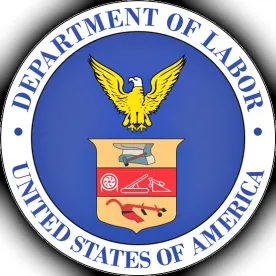The Advisory Council on Employee Welfare and Pension Benefit Plans (often called the “ERISA Advisory Council”) has released a report urging the Department of Labor (“DOL”) to streamline retirement plan disclosure requirements. The report reiterates concerns the Council expressed in 2005 and 2009, echoed by the U.S. Government and Accountability Office (the “GAO”) in 2013, that the number and complexity of mandatory disclosures confuses participants and burdens plan administrators. The Council’s latest report goes further than previous reports have done, outlining four recommendations for specific rule changes and proposing new model notices to simplify the current disclosure scheme.
Congress established the ERISA Advisory Council in 1974 to provide advice to the Secretary of Labor, who appoints the Council’s 15 members for staggered three-year terms. Members include employers, employee advocates, actuaries, accountants and insurance and investment experts. The Council meets four times a year, hears testimony, reviews written comments from the public. Although DOL is not bound by its recommendations, the Council’s input is generally considered influential given its statutory role and methodical process.
The Council began studying the efficacy of ERISA disclosures more than a decade ago. In formal reports issued in 2005 and 2009, the Council encouraged DOL to take steps to simplify disclosure requirements and to loosen restrictions on electronic distribution. In 2013, a GAO report articulated similar views, noting more than 130 reports and disclosures mandated by DOL, Internal Revenue Service and Pension benefit Guaranty Corporation left participants and plan administrators overwhelmed.
The Council’s recently-released report, titled Mandated Disclosure for Retirement Plans – Enhancing Effectiveness for Participants and Sponsors, continues this drumbeat, acknowledging the “generally consistent agreement” among witnesses representing both plan administrator and participant constituencies that “the overwhelming number and content of the disclosures . . . defeat the stated purpose” of informing participants about their retirement plan benefits. (A separate report offering recommendations for health plan disclosures is not discussed in this post.)
The Council offers four key recommendations:
-
“Quick Reference Guide” in lieu of SPDs and SMMs. The Council recommends allowing plan administrators to distribute an annual “Quick Reference Guide” in lieu of summaries of material modification (“SMMs”) and summary plan descriptions (“SPDs”). However, plans would still be obligated to distribute SPDs to all newly-eligible employees and to any participant or beneficiary upon request. The report offers a proposed model of this Quick Reference Guide, a five-page document which includes a long Q & A section.
-
Simplified Annual Funding Notice. The Council recommends simplifying the model annual funding notice, the disclosure required for defined benefit plans. The report proposes a revised model notice, which places basic educational information and metrics up front, with all other information contained in an appendix.
-
Summary Annual Report. The Council recommends allowing defined contribution plans to replace the summary annual report (the “SAR”) with a half-page “filing communication” informing participants how to access the plan’s most recently-filed Form 5500.
-
Electronic Distribution. The Council urges DOL to revisit its electronic distribution requirements to allow plans to more easily deliver mandatory communications to participants and beneficiaries electronically. Although the Council does not specify what the new requirements should be, the report emphasizes that revised regulations should not be tied to any current form of technology in ways that might preclude future innovation. In particular, the Council suggests that plans should have greater flexibility in providing dynamic and interactive electronic communications.
The report notes that the Council also considered additional recommendations for consolidating required fee disclosures under ERISA §§ 404(a)(5) and 408(b)(2) and the Form 5500 Schedule C, however the Council concluded that further study is needed before it makes recommendations.
As noted above, DOL is not bound to follow the Council’s recommendations. The report is nevertheless noteworthy because it reflects a consensus among key experts and stakeholders that that simpler, more efficient participant disclosure requirements will benefit participants and plan administrators alike. How DOL will respond to these calls for change remains to be seen.




 />i
/>i

